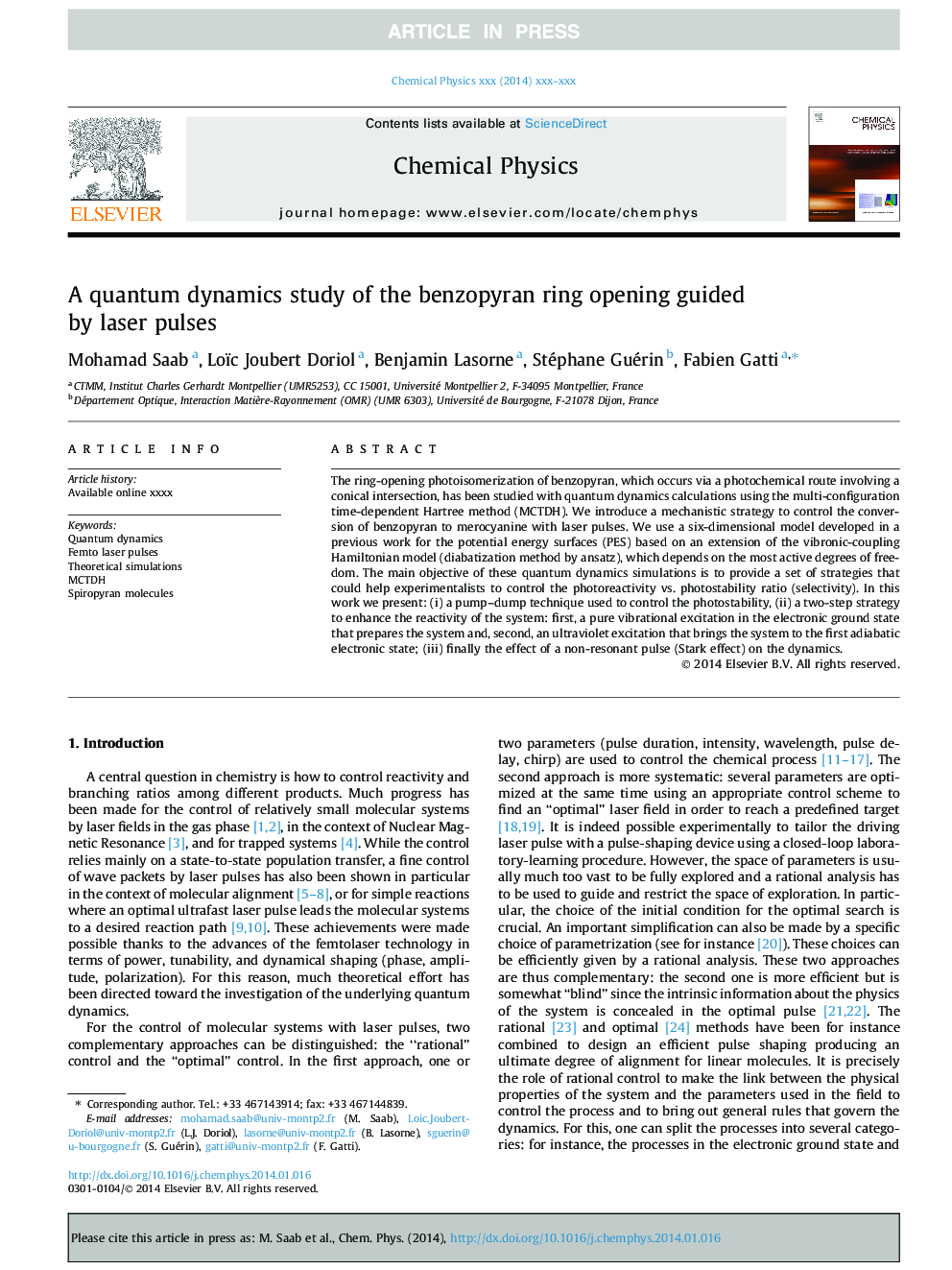| Article ID | Journal | Published Year | Pages | File Type |
|---|---|---|---|---|
| 5373493 | Chemical Physics | 2014 | 10 Pages |
Abstract
The ring-opening photoisomerization of benzopyran, which occurs via a photochemical route involving a conical intersection, has been studied with quantum dynamics calculations using the multi-configuration time-dependent Hartree method (MCTDH). We introduce a mechanistic strategy to control the conversion of benzopyran to merocyanine with laser pulses. We use a six-dimensional model developed in a previous work for the potential energy surfaces (PES) based on an extension of the vibronic-coupling Hamiltonian model (diabatization method by ansatz), which depends on the most active degrees of freedom. The main objective of these quantum dynamics simulations is to provide a set of strategies that could help experimentalists to control the photoreactivity vs. photostability ratio (selectivity). In this work we present: (i) a pump-dump technique used to control the photostability, (ii) a two-step strategy to enhance the reactivity of the system: first, a pure vibrational excitation in the electronic ground state that prepares the system and, second, an ultraviolet excitation that brings the system to the first adiabatic electronic state; (iii) finally the effect of a non-resonant pulse (Stark effect) on the dynamics.
Related Topics
Physical Sciences and Engineering
Chemistry
Physical and Theoretical Chemistry
Authors
Mohamad Saab, Loïc Joubert Doriol, Benjamin Lasorne, Stéphane Guérin, Fabien Gatti,
